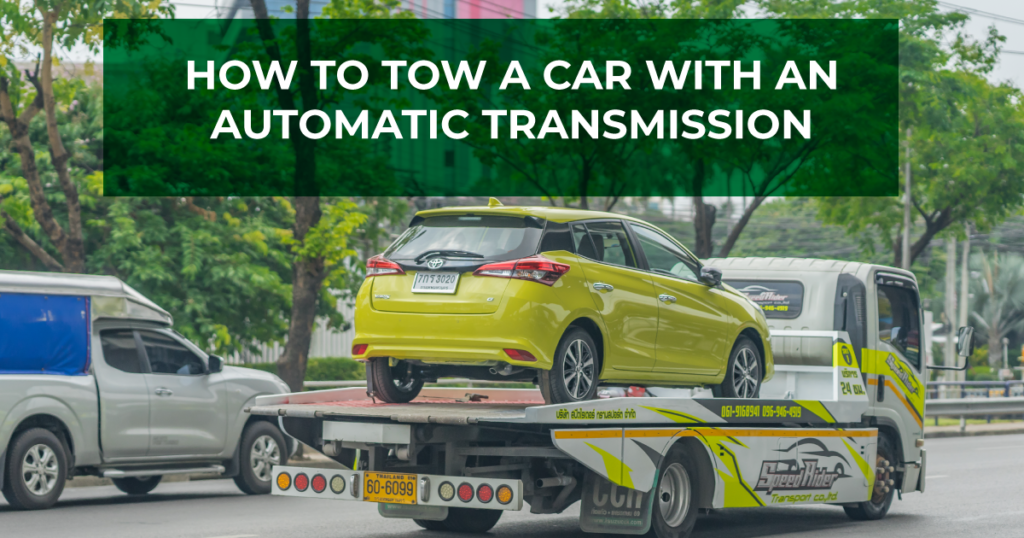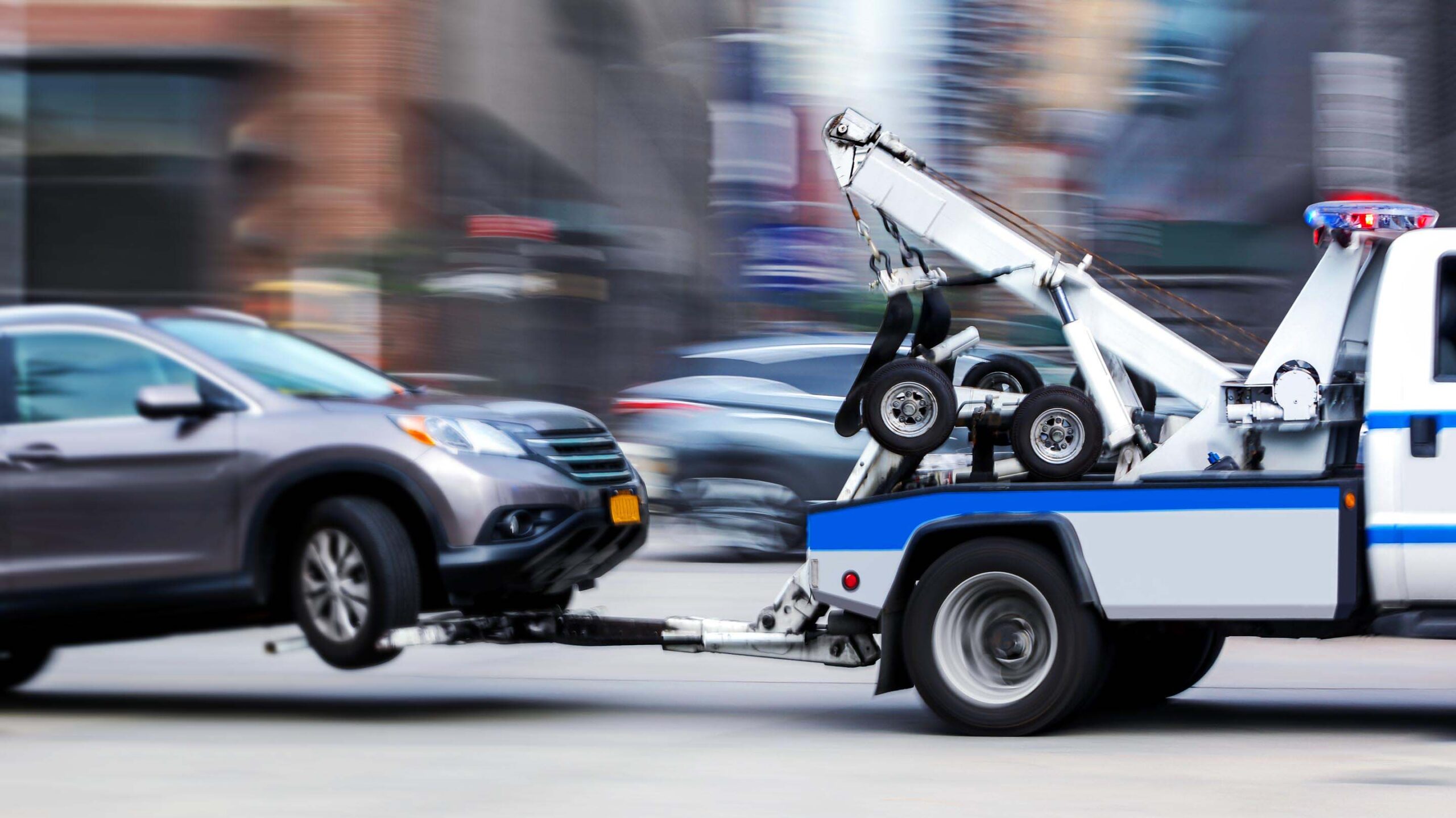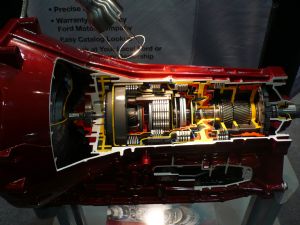When facing a vehicle breakdown, the question of whether an automatic car can be towed often arises. Understanding the capabilities and limitations of automatic cars in towing scenarios is crucial for motorists. This article aims to provide clear and concise information on the subject, assuaging concerns and offering practical guidance for those who may find themselves in need of towing an automatic car. So, let us explore the factors involved in towing an automatic car and equip you with the knowledge to make informed decisions in such situations.

This image is property of blog.autochek.africa.
Introduction
Overview of Automatic Cars
Automatic cars, also known as automatic transmissions, are vehicles that do not require manual shifting of gears by the driver. This type of vehicle is equipped with an automatic transmission system that automatically changes gears based on the speed and load conditions of the car. Automatic cars have become increasingly popular due to their convenience and ease of use.
Purpose of the Article
The purpose of this article is to provide a comprehensive guide on whether automatic cars can be towed and the different methods of towing that can be employed. Towing an automatic car requires careful consideration to ensure the safety of both the vehicle being towed and the towing vehicle. By understanding the various towing options and taking necessary precautions, you can avoid potential risks and damage.
Understanding Automatic Cars
What is an Automatic Car?
An automatic car, as mentioned earlier, is a vehicle that can change gears automatically without the need for manual shifting by the driver. In an automatic car, the transmission system uses hydraulic or electronic systems to control the engagement and disengagement of gears. This allows the driver to focus solely on controlling the vehicle’s speed and steering.
How Do Automatic Transmissions Work?
Automatic transmissions use a complex system of gears, clutches, and torque converters to enable the seamless shifting of gears. When the driver accelerates or decelerates, the transmission system adjusts the gear ratios to provide optimal power and efficiency. This process is controlled by the car’s computer, which monitors various inputs such as engine speed and throttle position.
Features and Components of Automatic Cars
Automatic cars have several features and components that make them different from manual transmission vehicles. These include a gear selector, which allows the driver to choose between different driving modes (such as Park, Reverse, Neutral, or Drive), and a torque converter, which serves as a fluid coupling between the engine and transmission. Additionally, automatic cars often have features like cruise control and hill assist, which enhance the driving experience.
This image is property of qph.cf2.quoracdn.net.
Different Types of Towing
Two Wheels Off the Ground
Towing an automatic car with two wheels off the ground involves lifting the front or rear wheels of the car onto a tow truck or dolly. This method is commonly used when the car is not roadworthy or when towing over short distances. It is important to use the appropriate towing equipment and follow proper procedures to prevent damage to the automatic transmission.
All Wheels on the Ground
Towing an automatic car with all wheels on the ground means that all four wheels of the vehicle are in contact with the road surface. This method is typically employed when the automatic car is capable of being driven and does not require any additional support or lifting during the towing process. It is important to ensure that the towing vehicle is suitable for towing the weight of the automatic car.
Using a Tow Dolly
A tow dolly is a small, two-wheeled trailer that can be attached to a towing vehicle. When using a tow dolly, the front wheels of the automatic car are placed on the dolly, while the rear wheels remain on the ground. This method is commonly used for towing front-wheel drive automatic cars, as it allows for easy and safe transportation.
Using a Flatbed Trailer
A flatbed trailer is a larger trailer with a flat surface that can accommodate the entire automatic car. It provides a stable and secure platform for towing, as the car is loaded onto the trailer and secured in place. This method is ideal for towing automatic cars that are all-wheel drive, as it ensures that all four wheels are off the ground and eliminates the risk of transmission damage.
Towing an Automatic Car with Two Wheels Off the Ground
Pros and Cons of Two Wheels Off the Ground Towing
Towing an automatic car with two wheels off the ground has its advantages and disadvantages. The main advantage is that it allows for easier maneuverability, especially in tight spaces. Additionally, this method is often more cost-effective, as specialized towing equipment, such as dollies, can be rented or purchased at a lower cost compared to flatbed trailers. However, there are also potential risks involved, such as the risk of damage to the transmission if not properly executed.
Proper Procedure for Two Wheels Off the Ground Towing
To tow an automatic car with two wheels off the ground, it is important to follow the proper procedure to ensure the safety of the vehicle being towed and other road users. Here are some key steps to consider:
- Ensure that the tow truck or dolly is in good condition and suitable for towing the weight of the automatic car.
- Attach the tow truck or dolly to the towing vehicle securely, following the manufacturer’s instructions.
- Position the automatic car onto the tow truck or dolly, making sure the front or rear wheels are properly secured and immobilized.
- Double-check that the automatic car is in neutral and the parking brake is released.
- Slowly and carefully drive the towing vehicle, maintaining a safe speed and distance from other vehicles.
- Monitor the automatic car during towing and periodically check the straps or chains securing the wheels to ensure they remain in place.
By following these steps and exercising caution, the risk of damage to the automatic transmission can be minimized.

This image is property of carfromjapan.com.
Towing an Automatic Car with All Wheels on the Ground
Pros and Cons of All Wheels on the Ground Towing
Towing an automatic car with all wheels on the ground has its own set of advantages and disadvantages. One major advantage is that it does not require specialized equipment, such as tow dollies or trailers, which can be more convenient and cost-effective. Additionally, this method allows for more flexibility as the automatic car can be driven onto the towing vehicle without the need for lifting or immobilizing the wheels. However, it is important to consider the weight and towing capacity of the towing vehicle, as exceeding these limits can pose safety risks and potentially damage the automatic car’s transmission.
Proper Procedure for All Wheels on the Ground Towing
To tow an automatic car with all wheels on the ground, it is crucial to follow the proper procedure to ensure the safety of both vehicles and other road users. Here are some key steps to consider:
- Ensure that the towing vehicle is suitable for towing the weight of the automatic car and has the necessary towing capacity.
- Double-check that the automatic car is in neutral and the parking brake is released.
- Attach a tow bar to both vehicles, making sure it is securely connected and properly aligned.
- Test the connection by gently pulling the towing vehicle to ensure that it is securely attached and there is no excessive movement.
- Signal your intentions to other road users by activating the hazard lights and using appropriate towing mirrors, if necessary.
- Slowly and carefully drive the towing vehicle, maintaining a safe speed and distance from other vehicles.
- Periodically check the towed vehicle during towing to ensure that the connection remains secure.
By following these steps and practicing vigilance, the risk of damage to the automatic transmission can be minimized.
Precautions to Take Before Towing an Automatic Car
Check the Owner’s Manual
Before towing an automatic car, it is essential to consult the owner’s manual or the manufacturer’s guidelines to understand any specific towing restrictions or requirements. The owner’s manual will provide valuable information regarding the maximum towing capacity, recommended towing methods, and any special considerations for the specific make and model of the automatic car.
Consult a Professional
If you are unsure about the proper towing procedure for your automatic car or have any concerns regarding towing, it is advisable to consult a professional towing service or your nearest dealership. They will have the necessary expertise and knowledge to advise you on the best towing method for your specific vehicle and any additional precautions that may be required.
Inspect the Towing Equipment
Before towing an automatic car, it is crucial to thoroughly inspect the towing equipment, including the tow truck, dolly, tow bar, or trailer. Check for any signs of damage or wear and tear that could compromise the safety and stability of the towing setup. It is also important to ensure that all components, such as straps, chains, and lights, are in good working condition and properly secured.
Ensure Proper Weight Distribution
When towing an automatic car, it is vital to ensure proper weight distribution to maintain stability and prevent damage. The weight of the automatic car should be evenly distributed between the towing vehicle and the towing equipment. Uneven weight distribution can put excessive strain on the towing vehicle and potentially lead to loss of control or damage to the transmission.
Secure Loose Items in the Car
Before towing an automatic car, it is essential to remove and secure any loose items inside the vehicle. Loose items can shift during the towing process and potentially cause damage to the interior of the car or affect its weight distribution. Items such as personal belongings, electronics, or loose accessories should be properly secured or removed altogether.
Disable the Parking Brake
To ensure safe and smooth towing, it is important to disable the parking brake of the automatic car. Leaving the parking brake engaged can cause excessive strain on the transmission and potentially lead to damage. Refer to the owner’s manual for specific instructions on how to disable the parking brake of your automatic car.
This image is property of qph.cf2.quoracdn.net.
Towing an Automatic Car with a Tow Dolly
How a Tow Dolly Works
A tow dolly is a specialized trailer that allows you to tow an automatic car with two wheels off the ground. The front wheels of the automatic car are placed on the dolly, while the rear wheels remain on the ground. The automatic car is secured to the tow dolly using straps or chains to prevent movement during towing. Tow dollies are particularly suitable for front-wheel drive automatic cars and provide a stable and secure towing method.
Advantages and Disadvantages of Using a Tow Dolly
Using a tow dolly has several advantages. Firstly, it allows for easy loading and unloading of the automatic car without the need for additional lifting equipment. Secondly, tow dollies are generally more affordable and easier to maneuver compared to flatbed trailers. However, using a tow dolly does come with some disadvantages, such as limited ground clearance, which may restrict its use in certain terrain or road conditions.
Proper Procedure for Towing with a Tow Dolly
To tow an automatic car with a tow dolly, it is important to follow the proper procedure to ensure a safe and secure towing experience. Here are some key steps to consider:
- Ensure that the tow dolly is in good working condition and suitable for towing the weight of the automatic car.
- Attach the tow dolly to the towing vehicle following the manufacturer’s instructions, making sure the connection is secure.
- Position the automatic car onto the tow dolly, ensuring that the front wheels are properly aligned and centered.
- Secure the automatic car to the tow dolly using straps or chains, ensuring they are tight and secure.
- Double-check that the automatic car is in neutral and the parking brake is released.
- Test the connection by gently pulling the towing vehicle to ensure that it is securely attached and there is no excessive movement.
- Signal your intentions to other road users by activating the hazard lights and using appropriate towing mirrors, if necessary.
- Slowly and carefully drive the towing vehicle, maintaining a safe speed and distance from other vehicles.
- Periodically check the automatic car and the tow dolly during towing to ensure that the connection remains secure.
Towing an Automatic Car with a Flatbed Trailer
How a Flatbed Trailer Works
A flatbed trailer is a larger trailer with a flat surface that allows the entire automatic car to be loaded and transported. The automatic car is driven onto the flatbed trailer and then secured using straps or chains to prevent movement during towing. Flatbed trailers provide a stable and secure towing method, especially for all-wheel drive automatic cars.
Advantages and Disadvantages of Using a Flatbed Trailer
Using a flatbed trailer offers several advantages. Firstly, it allows for the safe and secure towing of all-wheel drive automatic cars, as all four wheels are off the ground. Secondly, the flat surface of the trailer provides more stability and reduces the risk of damage to the automatic transmission. However, using a flatbed trailer does come with some disadvantages, such as its larger size and potentially higher cost compared to tow dollies.
Proper Procedure for Towing with a Flatbed Trailer
To tow an automatic car with a flatbed trailer, it is important to follow the proper procedure to ensure a safe and secure towing experience. Here are some key steps to consider:
- Ensure that the flatbed trailer is in good working condition and suitable for towing the weight of the automatic car.
- Attach the flatbed trailer to the towing vehicle following the manufacturer’s instructions, making sure the connection is secure.
- Drive the automatic car onto the flatbed trailer, aligning the wheels properly and ensuring that the car is centered.
- Secure the automatic car to the flatbed trailer using straps or chains, ensuring they are tight and secure.
- Double-check that the automatic car is in neutral and the parking brake is released.
- Test the connection by gently pulling the towing vehicle to ensure that it is securely attached and there is no excessive movement.
- Signal your intentions to other road users by activating the hazard lights and using appropriate towing mirrors, if necessary.
- Slowly and carefully drive the towing vehicle, maintaining a safe speed and distance from other vehicles.
- Periodically check the automatic car and the flatbed trailer during towing to ensure that the connection remains secure.
This image is property of www.jimjenningstransmissions.com.
Can You Tow an Automatic Car in Neutral?
Yes, it is generally safe to tow an automatic car in neutral. When the automatic car is in neutral, the transmission disengages from the engine, allowing the wheels to rotate freely. This reduces the risk of damage to the transmission while being towed. However, it is crucial to refer to the owner’s manual or seek professional advice to ensure that towing in neutral is appropriate for your specific automatic car make and model.
Potential Risks of Towing an Automatic Car
Towing an automatic car, like any other towing process, carries certain risks that should be considered. These risks include:
-
Transmission Damage: Towing an automatic car incorrectly or without following proper procedures can cause damage to the transmission. This can be expensive to repair and may result in the car becoming inoperable.
-
Improper Weight Distribution: Failing to properly distribute the weight of the automatic car during towing can lead to stability issues, increasing the chances of accidents or damage to both vehicles.
-
Exceeding Towing Capacity: Overloading the towing vehicle by towing an automatic car that exceeds its towing capacity can strain the engine and brakes, potentially causing mechanical failures or accidents.
-
Inadequate Towing Equipment: Using substandard or inappropriate towing equipment can compromise the safety and stability of the towing setup, increasing the risk of accidents and damage to the automatic car.
-
Improperly Secured Towing Connection: Failing to secure the towing connection properly can lead to the automatic car becoming detached, posing a significant risk to other road users and potentially causing damage to both vehicles.
To mitigate these risks, it is essential to follow proper towing procedures, consult the owner’s manual, and seek assistance from professionals as needed.
Conclusion
In conclusion, towing an automatic car is possible but requires careful consideration and adherence to proper procedures. Whether you choose to tow an automatic car with two wheels off the ground, all wheels on the ground, using a tow dolly, or a flatbed trailer, it is crucial to take precautions to ensure the safety of the automatic car, towing vehicle, and other road users. By following the guidelines provided in this article, consulting the owner’s manual, and seeking professional advice when needed, you can safely and effectively tow an automatic car without causing damage to the transmission or encountering other complications. Remember to prioritize safety and double-check all connections and procedures before embarking on any towing journey.

